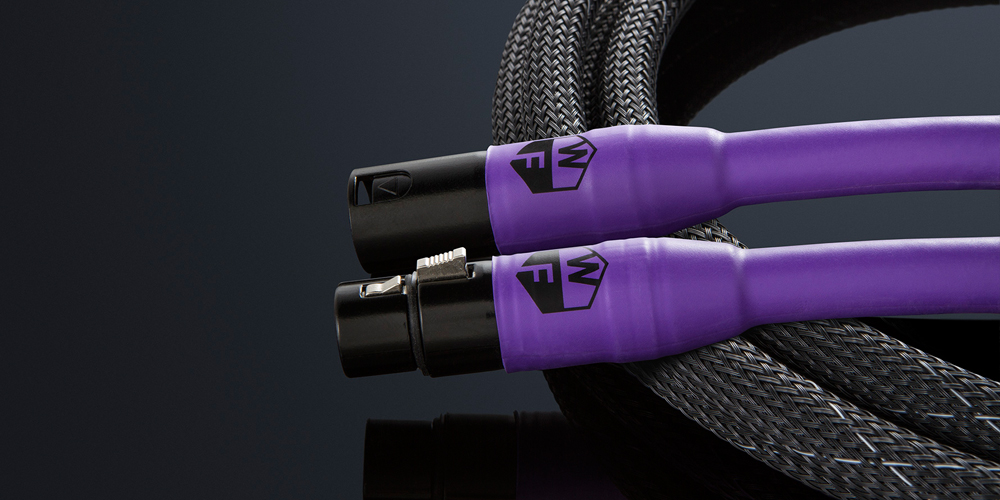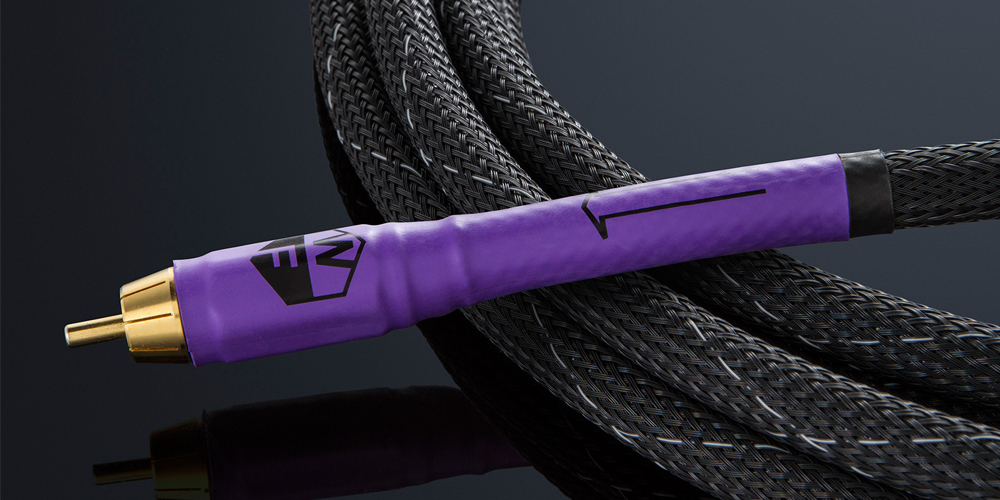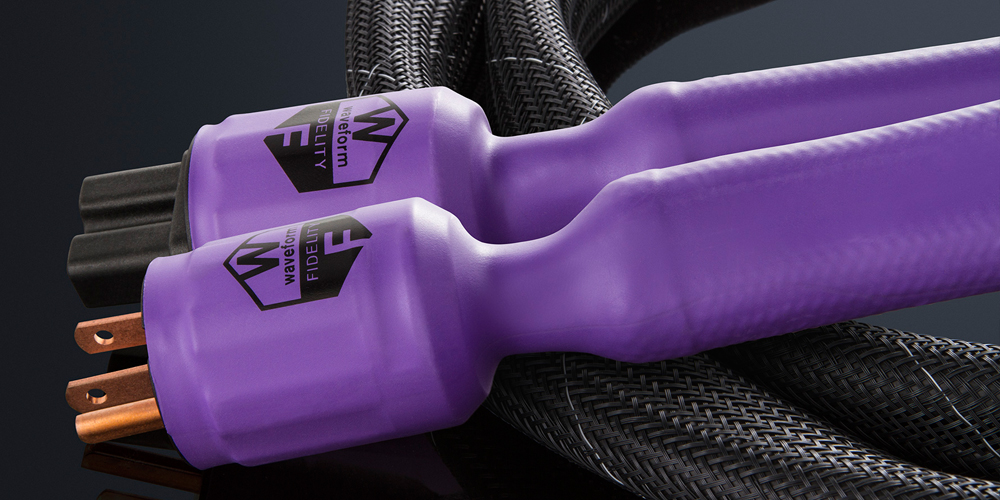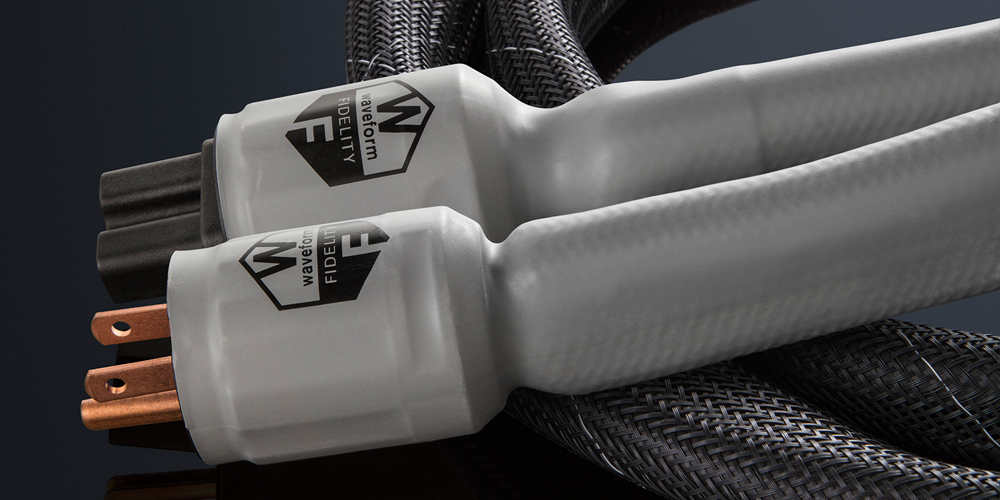LB: A power cord is, at least in principle, rather straightforward, consisting of a conductor, insulator (dielectric), and plugs. Again starting with the general, for the conductor, do you use silver, copper, or some combination thereof? Are they single, or multi-stranded? What type of insulation do you use? And what plugs?
PK: In all my cords I use un-plated multi-strand annealed OFC copper. From my perspective, UPOCC cords leads one down a slippery slope. My subjective impression is that Ohno Continuous Cast wires give a muted treble and overblown bass; to compensate, the typical approach is to use a rhodium-plated connector. Although others find it appropriate, this is not the path I prefer to take. I do use oxygen free continuous cast copper in my interconnects, but this is not manufactured with the Ohno process, rather its manufactured by a continuous casting process and machinery developed in Finland.
Instead, inside my cordage you will find polypropylene and industry-approved elastomers. As I expect my cords to be walked on daily, and survive traffic from anything short of a metal-tracked vehicle, the outer insulation is PVC. My connectors are sourced from Taiwan and are made from high copper content alloy with a tarnish-resistant finish. The connectors look superficially like many from the PRC, but have a different metallurgy, geometry, and quality control regime. My Powercon terminated cord’s connector is made in Lichtenstein. I’ve made cords with the majority of connectors from many manufacturers and I’ve spent the time listening to them. And when I’ve narrowed the possibilities, I dragoon audio friends, with ears that I trust, to help with the final selections.
LB: How does your mathematical background relate to audio products?
PK: After a career of measurement, regression, modeling and analysis in biochemistry, product design/quality control and finally financial engineering, I found that these techniques, specifically regression analysis, can be applied directly to the optimization of audio reproduction characteristics that are normally viewed as solely subjective. It is simply a technology to apply in the service of musical reproduction. Like other vendors, I use EMF-reactive compounds in my products, and have been developing its applications for six years. Gutwire and Shunyata have been using their own choices of piezoelectric, pyroelectric, and ferroelectric crystalline materials since the early 2000’s. What is, I believe, unique to my approach, is that it incorporates my observation that the amount and mixture of “optimal” crystals for a given application is dependent upon the connectors used, as well as the length of the cable in the chosen geometry. When I build a specific cable of arbitrary length, I begin by entering its length into my spreadsheet which calculates the amounts of reactive crystal, using a regression-derived formula for each type of cable, so that each and every cable type sounds the same, regardless of length. As a result, I do believe that I’m the only cable manufacturer who uses a Mettler Swiss gem scale daily.
LB: What led you to the use of crystals?
PK: Over 15 years ago, folks started talking about crystals as a magical passive cure for all things audio. It struck me as ludicrous, especially when someone posited a ridiculous explanation as to why they did these miraculous things. Regardless, it was relatively straightforward to empirically investigate whether the crystal (typically piezoelectric) had an effect, good or bad. So I evaluated various minerals and noted that they had substantial subjective effects on the sound of power cords, and those effects could be quite beneficial. At this point in time, I’ve nothing that rises to the definition of a hypothesis, let alone theory as to how my use of crystalline minerals actually work in my cables. To be honest, the reason vendors describe the action of their crystals, inevitably invoking the word “quantum,” is so that their customers can feel they’re privy to some esoteric knowledge. Regardless, all of my cables use EMF-reactive crystals.
LB: Mathematics is quantitative, whereas audio is largely subjective. How do you merge the two? Asked another way, how do you quantify a subjective experience?
PK: Good engineering requires the acknowledgement of certain “a priori” objective measures. The capacitance of an interconnect must be low enough as to not roll off high frequencies. In our radio frequency-saturated environment they need real shielding to keep out noise, and twisted signal wires to minimize inductively coupled noise. Power cords require minimized inductance as well as limited capacitive coupling to the safety ground wire. And speaker cables require a balance between capacitance and inductance so as not to limit either highs, or lows, as well as an immunity to radio frequency “break through.”
But beyond those “givens,” there is a subjective body of knowledge to be gained by empirical, “a posteriori” knowledge, that serves as a foundation for further improvements.
A serious problem faced by wire manufacturers, as well as manufacturers of other types of audio gear, is the lack of clearly defined measurable parameters that correlate with the sound. Manufacturers are thus faced with trying to quantify and optimize something that is inherently subjective. Objectively optimizing something that is inherently subjective, is a daunting task. That said, it is achievable, but one must seek subjective measures that are extremely sensitive around “optimal.” One such parameter that I use routinely is the vertical elevation of a performer within the soundstage.
For example, I have applied this to cable directionality, with very promising results. When using an appropriate recording, the voice, due to studio processing, appears at a vertical elevation >30 degrees when using the correct cable orientation, but an image elevation of 0 – 15 degrees with the incorrect orientation. This bifurcated result is reproducible. Moreover, that proper orientation conveys the proper soundstaging, as well as subjectively preferable characteristics. [Empirical identification of wire directionality was first mentioned, as far as I know, by WonderWire, and expanded upon by the late Bob Crump.]
Similarly, optimization of the optimal amount of my “crystal method” is most easily recognizable with specific sounds, ones that any sound reproduction system has difficulty conveying accurately. Among those I use is a well recorded tambourine. I don’t know how to properly describe the attack, decay, and harmonics of a properly reproduced tambourine, but I know it when I hear it. It also helps that I get to hear 20+ live Balkan/Middle Eastern bands in one weekend every year right here in Brooklyn. For an arbitrary cable configuration and associated connectors, that optimum amount of minerals is clearly related to the cable’s length. For cables whose difference is only its length, plotting those ‘optimal’ treatment yields a logarithmic function, amenable to regression techniques, that will yield yet another better set of length dependent optimums. In the case of my interconnects, those amounts must be accurate to + 2 milligrams, as measured on my Swiss Mettler jewelers scale.
The way I get my data points used for input into my regression analysis is to optimize the amount of reactive crystals for an arbitrary length, by listening to well recorded tambourine and massed choral voices, whether for a power cord, speaker cable or interconnect. Though we may not be able to describe those sounds fully, we know they’re correct and natural when we hear them. The result of doing this for five or six different lengths of specific cable are five or six data pairs, each with a length and subjectively optimal amount of crystals. Whether it’s the power cord, interconnect, or speaker cable implementation, that formula is a monotonically increasing concave function with respect to length and amount of optimal EMF reactive compounds. While this does not provide causation, it does consistently provide correlation that it does work.
From my work with crystals I have learned that to achieve proper tone or tuning for any cable (or component for that matter), everything matters, where everything includes cable geometry, the shielding, the connectors, the solder, and how the connector joins the wires. While this is known to experienced cable engineers and manufacturers, adding and controlling crystals requires mathematical facility, coupled with a good sense of music and great ears. The normal variables become far more complex with crystals and this was a lot to learn; you can’t just add them and hope.
On a larger scale, the entire development process can be described as a gradient search optimization, with a dollop of integer programming (for making decisions as to which connectors to use). As I mentioned earlier, my goal has been to apply quantitative techniques to optimize metrics that are often subjective, which has yielded products far better, and far more consistent, than had I not used that framework.
LB: I’m only familiar with your HE power cords. Please describe your other products, and their characteristics.
PK: The HE mk3 power cord was designed to provide approximately 80% the performance of its big brothers, the GS mk3 Source cord and the GS mk3 High Current (“HC”) cords, at about 1/3rd the cost. When the HEs are used to power an amp or power conditioner, listeners don’t find anything missing; it’s only when directly compared to the GS mk3 HC would one realize the GS provides a larger, enveloping soundstage, with a bit more solidity and a slightly more extended bass. But when the HE cord was compared to the GS mk3 Source cord on preamplifiers and source components, the HE cord’s performance was only about 65% of the GS mk3 Source. Given its cost it was still great value as a source cord when compared to other companies’ offerings, but I knew that it could be improved. After a six month development project, the HE power cord line evolved to comprise two models. The original HE mk3 has been renamed the HE mk3 HC; it is specific for high current applications, yet still very good at powering source components. The newest cable architecture cord, the HE mk3 Source, provides that same 80% performance when compared to the GS mk3 Src, at less than 50% of its cost.
I still make my Alchemist, a multiple filter power conditioner, but these are on a custom basis. They are available with three different filter types, as each component benefits from power filtering specific to what it powers. Some components, like many power amplifiers or my CAT SL-1 preamplifier, don’t tolerate inductive elements, so work best with parallel filtering. Other components, typically source components and preamps, have a minimal, constant power draw, and benefit from substantial common and differential mode inductive filtering. (This is inappropriate in other components, as it limits current draw.)
Turning to interconnects, my GS mk3 interconnects are available with single ended RCA connectors, balanced XLRs, as well as RCA source end / XLR load end connectors. The design goal was to make cables that produce the same sound regardless of termination or length (> 10 meters). Moreover, they had to perform as well or better than more expensive solid core, unshielded interconnects, while providing the resilience, flexibility and longevity of stranded wiring and proper shielding and rejection of both inductive EMI and capacitive RFI coupled noise, as well as immunity from mechanical vibration induced (triboelectric) noise.
Last but not least, the GS mk3 speaker cables and jumpers are available with any connectors as long as it’s a WBT Nextgen spade on one end and a metallurgical clone of the discontinued WBT Topline locking banana on the other. I realize this is an inconvenience and might cost sales, but the cables simply cannot offer the same superb performance with other connectors. I cannot recommend these cables for bi-wiring either; you’re much better off with single wiring and jumpers. On the other hand, these cables work extremely well for bi- and multi-amping.
LB: Paul, thank you for the time to speak with us. I find your rigorous and quantitative approach top audio design, both fascinating and encouraging, and I wish you continued success.
PK: Thank you Larry for allowing me this opportunity. It’s been difficult to describe my methods and approach as they apply to audio reproduction in general and cabling specifically. Obviously, others have a very different approaches and perspectives on cabling. This is what works for me.
- ← Previous page
- (Page 2 of 2)




